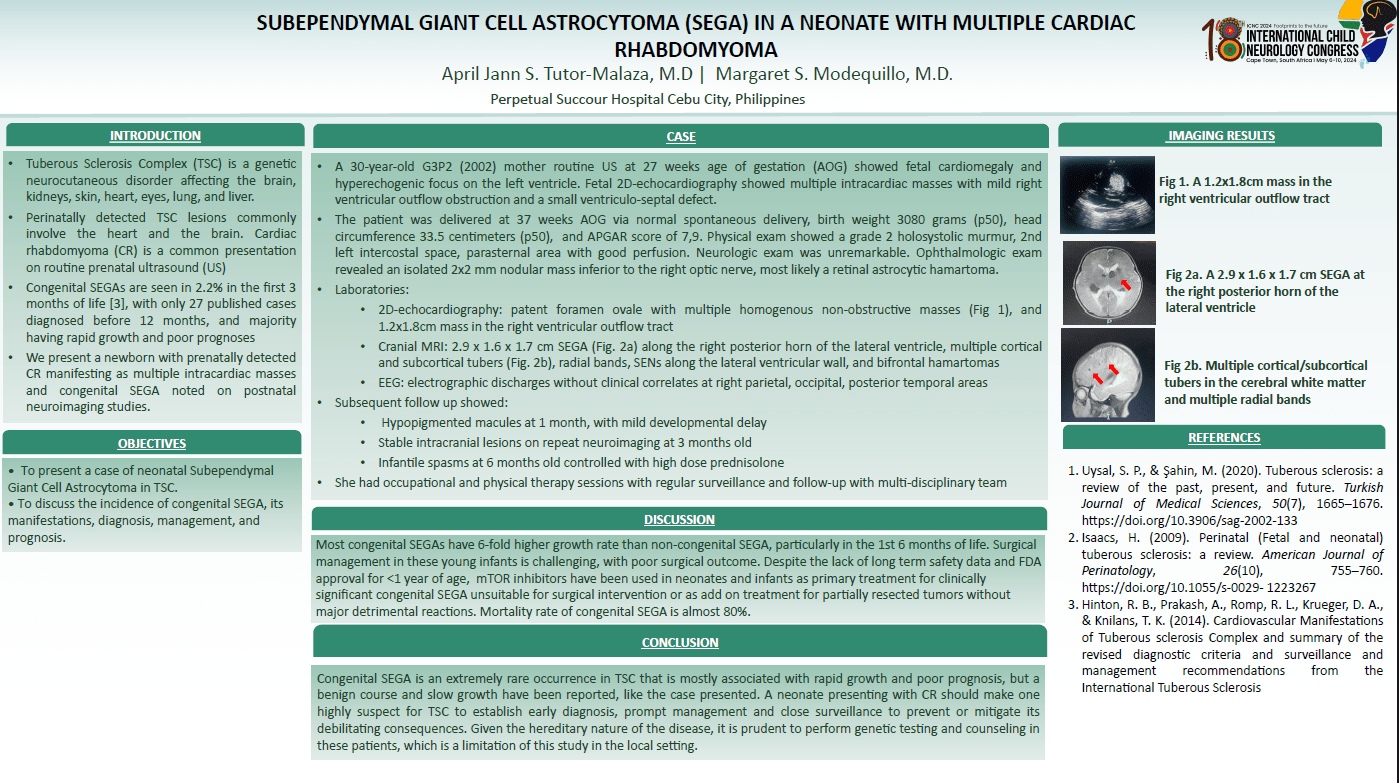Subependymal Giant Cell Astrocytoma (SEGA) In A Neonate With Multiple Cardiac Rhabdomyoma
Introduction: Tuberous sclerosis complex (TSC) is an autosomal dominant neurocutaneous disorder characterized by multiple benign tumors in the brain, heart, eyes, skin, lungs, and kidneys due to mutation of the tumor suppressor genes. Up to 24% of TSC patients develop subependymal giant cell astrocytoma (SEGA) during the first two decades of life. However, it is reportedly seen in only 2-7% of patients in the 1st 3 months of life.
Objectives: We report a rare case of neonatal SEGA in TSC with multiple cardiac rhabdomyomas (CR) and discuss briefly on its incidence, clinical manifestations, diagnosis, management, and prognosis in this very young age group.
Methods: A newborn with multiple intracardiac masses noted on prenatal sonography was shown to have multiple CR on post-natal 2d Echocardiography with a Grade II holosystolic murmur and transient cyanosis. A clinically definite diagnosis of TSC was established when neuroimaging showed cortical tubers, SEN, hamartomas, and SEGA.
Conclusion:Congenital SEGA is an extremely rare occurrence in TSC that is mostly associated with rapid growth and poor prognosis, but a benign course and slow growth have been reported, like the case presented. A neonate presenting with CR should make one highly suspect for TSC to establish early diagnosis, prompt management and close surveillance to prevent or mitigate its debilitating consequences. Given the hereditary nature of the disease, it is prudent to perform genetic testing and counseling in these patients, which is a limitation of this study in the local setting.
April Jann Tutor-Malaza
Perpetual Succour Hospital
Philippines
Margaret Modequillo
Perpetual Succour Hospital
Philippines

April Jann Tutor-Malaza
Perpetual Succour Hospital
Philippines